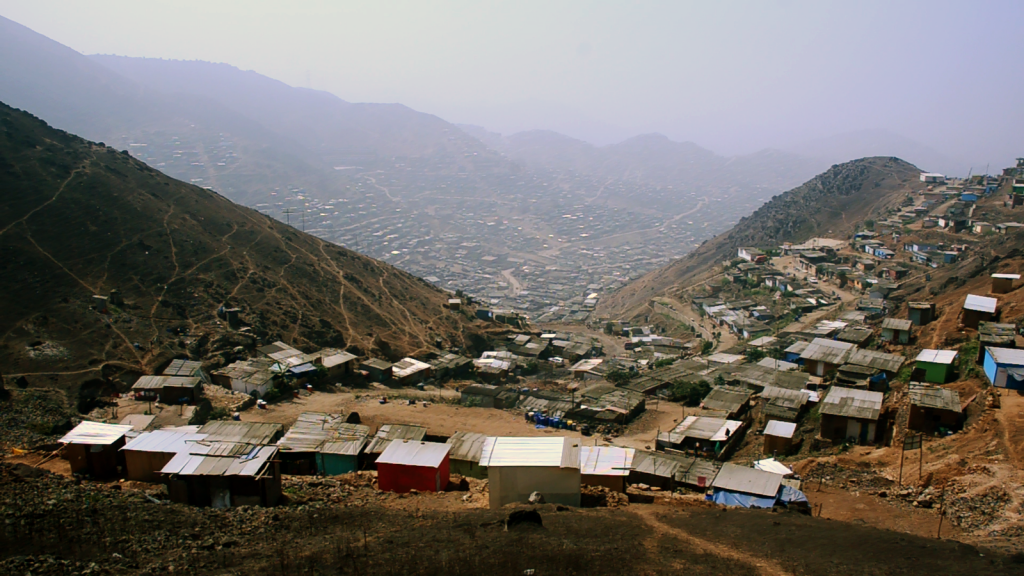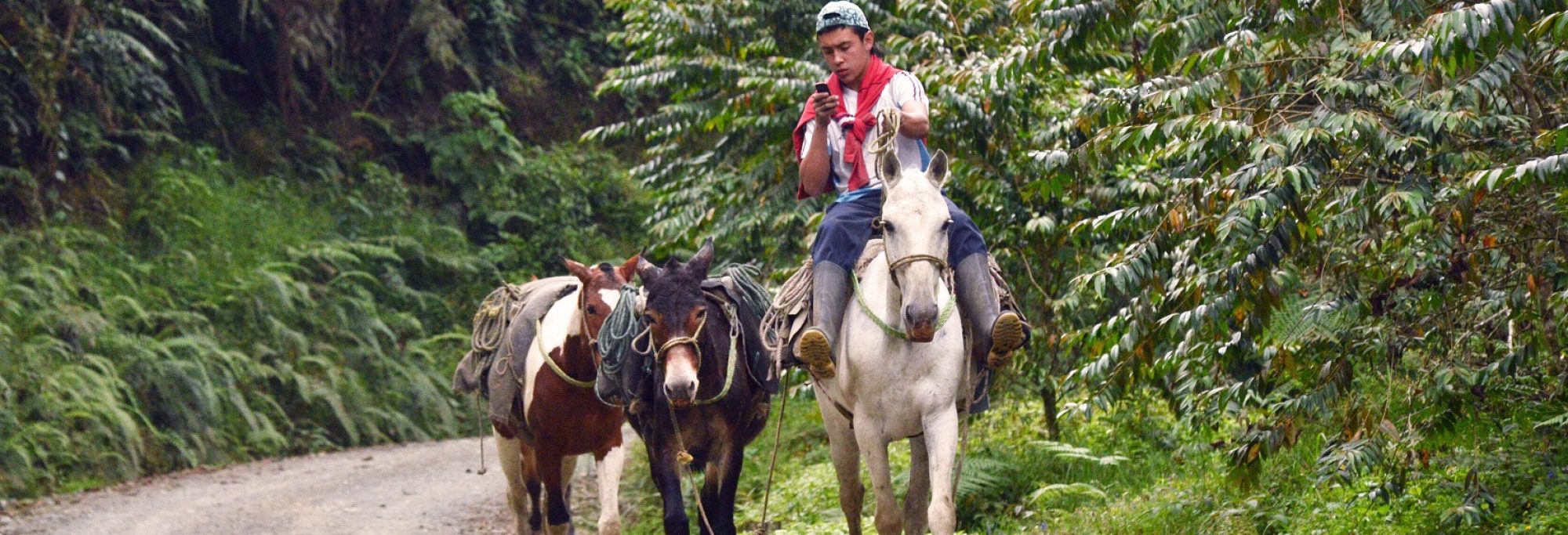Catching Fog in Lima
by Aleszu Bajak.
“This is the real Peru,” says eighteen-year-old Frank Rodas as he spreads his arms. He adjusts his baseball hat and looks down into a hazy valley at Villa Maria del Triunfo, a shantytown of sixty-thousand that blankets the hills of southern Lima. “What you see in downtown Lima is all just a screen.”
One hundred and fifty thousand people pour into Lima every year from Peru’s provinces. Like Rodas, most end up in pueblos jóvenes—literally young towns—in improvised dwellings with no running water and sporadic access to electricity. This constant influx means houses are added by the day, built into the rocky hillside with walls of salvaged wood or concrete if the family can afford it. Like Rodas´s parents, most immigrants come to Lima to find work, shelter, and perhaps a way to break out of poverty—they aren’t able to build themselves homemade shelters, except in some of the poorest areas of the country, where they often do so on unstable ground. Paradoxically, many residents of the pueblos jóvenes are forced to pay two to three times more than they would to live in downtown Lima: these settlements are unauthorized and so subject to extortionist landlords who tax access to pirated utilities.
 |
To reach the upper limits of Villa Maria del Triunfo, our taxi crawled up a dirt road past hundreds of these ramshackle houses. Roosters stood guard out front, children played in the street, and the stench from pig pens spread throughout the settlement. Unlike most of the crudely-built houses in Villa Maria, the hogs and their sties are legal on these hillsides; Lima has for a long time zoned some of its marginal districts as agricultural. When the road became too steep for the beat-up station wagon, we got out to walk the last few steps to the highest point, a small neighborhood named Flor de Amancay after the bright yellow flower that blankets these hillsides throughout Lima’s damp winter.
